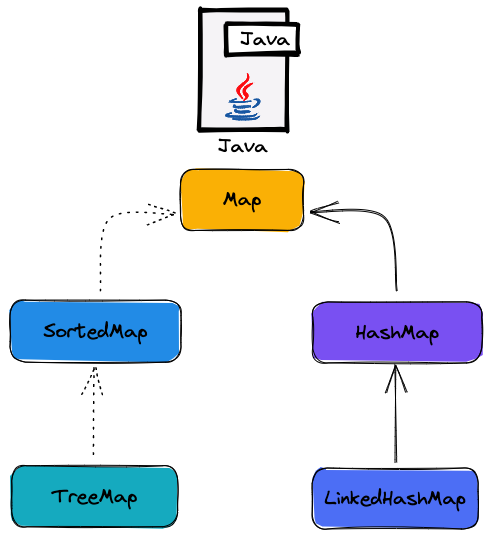Differences Between TreeMap, HashMap, and LinkedHashMap in Java
- February 18, 2023
- Reading time . 3 min
- Author: Yuniel Acosta

Java offers three classes that implement the Map interface: HashMap, LinkedHashMap, and TreeMap. Each of these classes has its own characteristics that make them suitable for different use cases. In addition, Java also offers the SortedMap interface, which extends the Map interface and provides additional methods for working with ordered maps. In this article, we will focus on the differences between TreeMap, HashMap, and LinkedHashMap in Java.
HashMap
HashMap is the most commonly used implementation of the Map interface in Java. It is an unordered collection of key-value pairs that uses hashing to store and retrieve elements quickly. The HashMap class does not guarantee the order of the elements and does not maintain any order of elements. The hashing algorithm used in HashMap provides constant-time performance for basic operations such as get and put.
HashMap is the best option when you need a fast and unordered mapping of keys to values. It is ideal for situations where you don’t care about the order of the elements and want to quickly access them using their keys.
LinkedHashMap
LinkedHashMap is a subclass of HashMap that maintains the order of elements in which they were inserted. It has a doubly-linked list running through all of its entries, allowing the elements to be accessed in insertion order. LinkedHashMap provides all the same methods as HashMap, with the added benefit of retaining the order of insertion.
LinkedHashMap is the best choice if you need to maintain the insertion order of elements. It is ideal for situations where you want to iterate over the elements in the order in which they were added.
TreeMap
TreeMap is an implementation of the SortedMap interface, which means that it maintains the elements in a sorted order. TreeMap is based on a Red-Black tree data structure and provides guaranteed logarithmic time cost for the basic operations (get and put). TreeMap sorts the elements based on the keys, and it is ideal for use cases where the keys need to be sorted.
TreeMap is the best option if you need a sorted mapping of keys to values. It is ideal for situations where you need to access the elements in a specific order, based on their keys.
Conclusion
Choosing the right implementation of the Map interface in Java depends on the specific requirements of your project. If you need a fast and unordered mapping of keys to values, HashMap is the best option. If you need to maintain the insertion order of elements, LinkedHashMap is the best choice. If you need a sorted mapping of keys to values, TreeMap is the best option. By understanding the differences between these three classes, you can choose the one that best suits your needs.